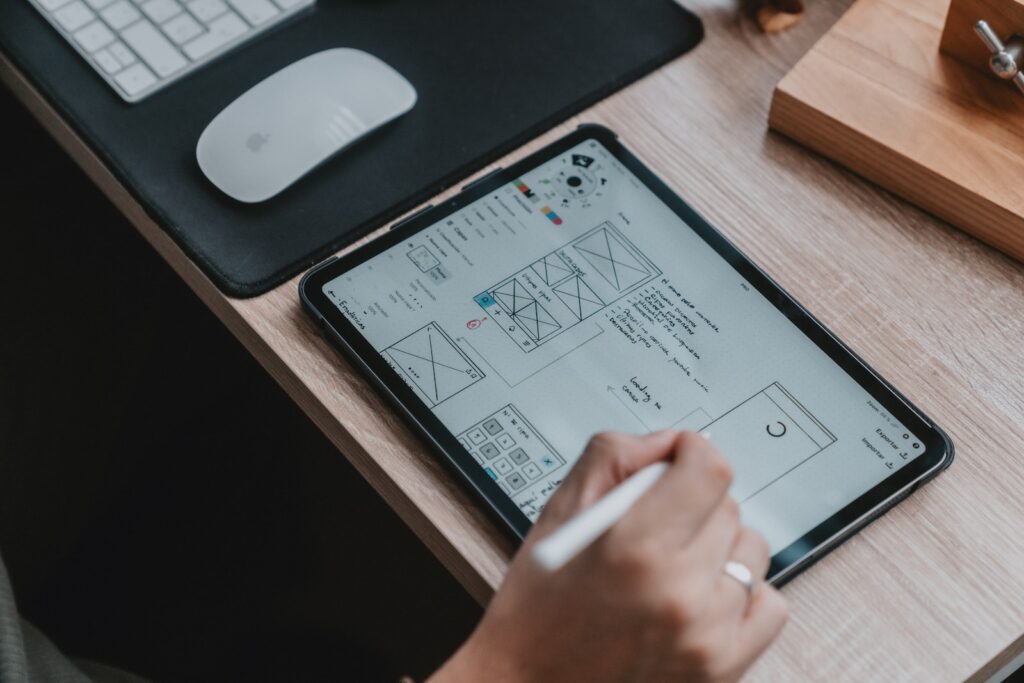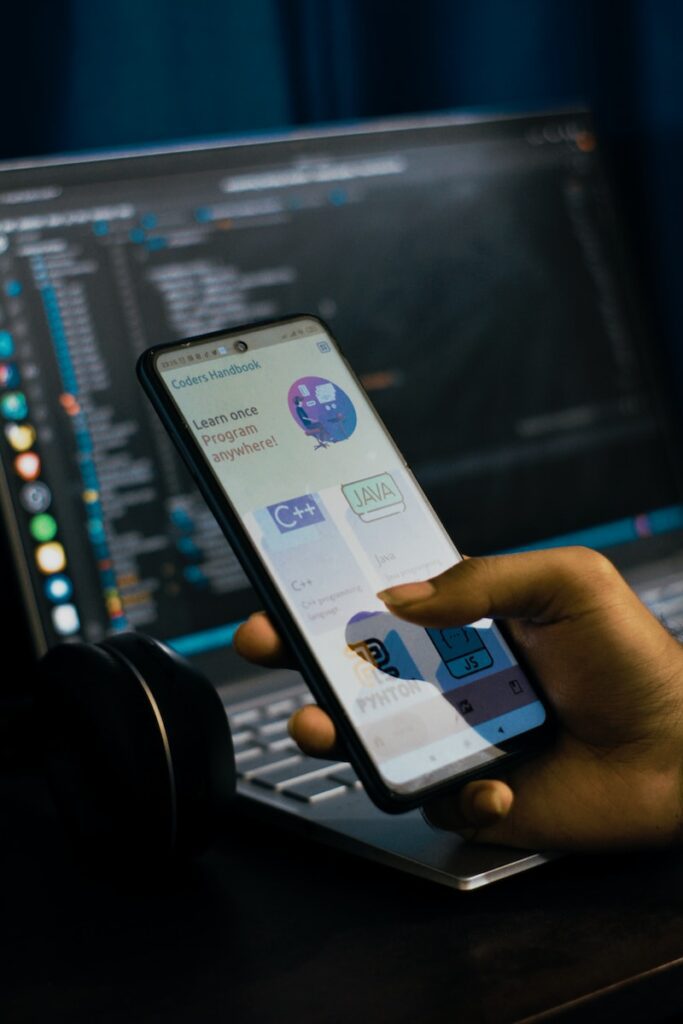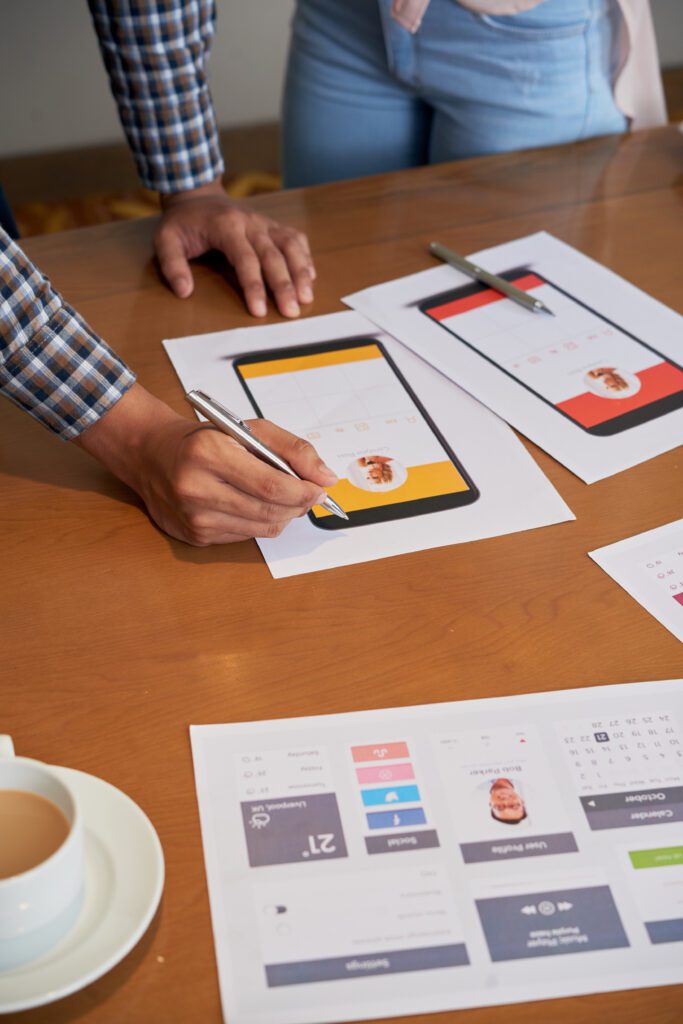Developing a mobile app can be a challenging process, especially when it comes to the design aspect. Creating a visually appealing and user-friendly interface can make or break the success of a mobile app. This is where UI kits for app design come in. UI kits provide pre-designed and customizable user interface elements that can simplify the design process while ensuring consistency, coherence, and functionality. In this article, we’ll take a look at the 15 best UI kits for mobile app design to help you create amazing mobile apps.
How UI Kits Can Help You Create Amazing Mobile Apps
UI kits provide the building blocks for mobile app design. They include pre-designed user interface elements, such as buttons, icons, login screens, and other interface components, that can be customized to fit your specific needs. Using a UI kit can save time and reduce development costs while also ensuring that your app has a consistent and visually appealing interface. UI kits can also help streamline collaboration between designers and developers, allowing them to work seamlessly together.
Another benefit of using UI kits is that they often come with pre-built templates for common app screens, such as home screens, settings screens, and profile screens. This can be especially helpful for designers who may not have experience designing for mobile apps or who are working on a tight deadline. With pre-built templates, designers can quickly create a functional and visually appealing app without having to start from scratch.
Additionally, UI kits can help ensure that your app is accessible to a wider audience. Many UI kits include elements that are designed to be accessible to users with disabilities, such as larger text sizes, high contrast colors, and screen reader compatibility. By using these elements in your app design, you can make your app more inclusive and user-friendly for all users.
The Benefits of Using UI Kits for Mobile App Design

Another advantage of using UI kits for mobile app design is that they often come with pre-designed templates and layouts. This can be especially helpful for designers who may not have a lot of experience in mobile app design or who are working on a tight deadline. These templates can serve as a starting point for the design process, allowing designers to focus on customizing and refining the elements to fit the specific needs of the app. Additionally, UI kits often include design guidelines and best practices, which can help ensure that the app is user-friendly and easy to navigate.
What to Look for in a UI Kit for Mobile App Design
When selecting a UI kit for mobile app design, there are several factors to consider. First, make sure the kit includes components that match the platform(s) you are developing for. You should also look for a kit that is well-designed, easy to use, and customizable. Additionally, the kit should provide a range of elements that can be combined in different ways to create a unique interface for your app. Finally, consider the licensing terms and cost of the kit.
Another important factor to consider when selecting a UI kit for mobile app design is the level of support provided by the kit’s developers. Look for a kit that has a strong community of users and developers who can provide assistance and answer questions. This can be especially helpful if you are new to mobile app design or if you encounter any issues while using the kit.
It’s also worth considering the overall style and aesthetic of the UI kit. Look for a kit that aligns with the design language of your app and your brand. This can help ensure a cohesive and consistent user experience across your app’s interface. Additionally, consider whether the kit includes any unique or innovative design elements that can help your app stand out from the competition.
Top Features to Consider When Choosing a UI Kit for Mobile App Design
Some of the top features to consider when choosing a UI kit for mobile app design include the number and variety of components included, the quality of the design and user experience, ease of customization, and the support and documentation provided by the vendor. Look for a UI kit that includes a comprehensive set of components that are well-designed and easy to modify. The kit should also have clear documentation and support to help you get the most out of it.
Another important feature to consider when choosing a UI kit for mobile app design is its compatibility with different platforms and devices. Make sure that the UI kit you choose is compatible with the operating system and screen sizes of the devices you are targeting. This will ensure that your app looks and functions well on all devices, providing a seamless user experience.
Understanding the Different Types of UI Kits Available for Mobile App Design
There are several different types of UI kits available for mobile app design, including general-purpose kits, platform-specific kits, and niche kits. General-purpose kits provide a wide range of components for use across different platforms, while platform-specific kits focus on the user interface for a specific platform, such as iOS or Android. Niche kits provide UI components for specific industries or use cases, such as e-commerce or healthcare apps.
It is important to choose the right type of UI kit for your mobile app design project. General-purpose kits are a good choice if you are designing for multiple platforms or if you want to have a wide range of options to choose from. Platform-specific kits are ideal if you are designing for a specific platform and want to ensure that your app has a consistent look and feel. Niche kits are great if you are designing for a specific industry or use case and want to have pre-designed components that are tailored to your needs.
How to Evaluate the Quality of a UI Kit for Mobile App Design
When evaluating the quality of a UI kit for mobile app design, consider factors such as the design and user experience of the components, the compatibility with different platforms and devices, the ease of customization, and the level of support and documentation provided. Look for kits that have high-quality design and user experience, clear documentation, and offer a range of components that can be easily customized to create a unique look and feel for your app.
Another important factor to consider when evaluating the quality of a UI kit for mobile app design is the level of updates and maintenance provided by the kit’s creators. A good UI kit should be regularly updated to ensure compatibility with the latest versions of operating systems and devices, as well as to fix any bugs or issues that may arise. Additionally, the creators of the kit should provide adequate support and resources to help users troubleshoot any problems they may encounter while using the kit. By choosing a UI kit that is regularly updated and well-supported, you can ensure that your app will continue to function smoothly and look great for years to come.
Top 15 UI Kits for Mobile App Design That You Need to Check Out
Now that we’ve talked about the benefits of UI kits for mobile app design and what to look for when selecting a kit, let’s take a closer look at the 15 best UI kits for mobile app design:
- Kit 1
- Kit 2
- Kit 3
- Kit 4
- Kit 5
- Kit 6
- Kit 7
- Kit 8
- Kit 9
- Kit 10
- Kit 11
- Kit 12
- Kit 13
- Kit 14
- Kit 15
When selecting a UI kit for mobile app design, it’s important to consider the type of app you’re designing. For example, if you’re designing a social media app, you may want to look for a UI kit that includes features such as profile pages, messaging, and news feeds. On the other hand, if you’re designing an e-commerce app, you may want to look for a UI kit that includes features such as product pages, shopping carts, and payment options.
Another important factor to consider when selecting a UI kit is the level of customization it allows. Some UI kits may be more flexible than others, allowing you to easily modify colors, fonts, and other design elements to match your brand. It’s also important to consider the level of support provided by the UI kit’s developer, as this can be helpful if you run into any issues during the design process.
A Comprehensive Overview of Each of the 15 Best UI Kits for Mobile App Design
Let’s take an in-depth look at each of the 15 best UI kits for mobile app design, highlighting their unique features and benefits.
UI kits are an essential tool for mobile app designers, providing pre-designed elements that can be easily customized to create a cohesive and visually appealing user interface. Some of the top UI kits on the market include Material Design, iOS Human Interface Guidelines, and Fluent Design System. Each of these kits offers a unique set of design elements and guidelines that can help designers create stunning mobile apps that are both functional and aesthetically pleasing.
Pros and Cons of Each of the 15 Best UI Kits for Mobile App Design
After exploring each of the 15 best UI kits for mobile app design, it’s important to weigh the pros and cons of each one to determine which one is the best fit for your project. Consider factors such as the number and variety of components, the level of customization, the quality of the design and user experience, and the licensing terms and cost.
One important factor to consider when choosing a UI kit is the level of support and documentation provided by the developer. Some UI kits may have a large community of users who can offer assistance and troubleshooting tips, while others may have limited resources available. Additionally, some UI kits may come with detailed documentation and tutorials, while others may require more trial and error to figure out how to use.
Another factor to consider is the compatibility of the UI kit with your chosen development platform. Some UI kits may be optimized for specific platforms, such as iOS or Android, while others may be more versatile and work well across multiple platforms. It’s important to choose a UI kit that will integrate seamlessly with your development environment to avoid any potential compatibility issues down the line.
How to Use the 15 Best UI Kits to Build Your Next Mobile App
Now that you’ve selected the best UI kit for your project, it’s time to start using it to create your mobile app. Begin by exploring the different components included in the kit and selecting the ones that best fit your needs. Customize the components as needed to create a unique look and feel for your app. Be sure to test your design on different devices and platforms to ensure that it is compatible and functional.
Another important aspect to consider when using a UI kit is to maintain consistency throughout your app. Stick to the same color scheme, typography, and design elements to create a cohesive user experience. It’s also important to keep in mind the user’s journey and ensure that the app is easy to navigate and use. Don’t be afraid to make adjustments and iterate on your design as needed to improve the user experience.
Tips and Tricks for Customizing Your UI Kit Designs
When customizing your UI kit designs, keep in mind the importance of consistency and coherence. Use a consistent color scheme and typography throughout the app to create a cohesive look and feel. Experiment with different design elements, but always keep the user experience in mind. Remember to test your designs thoroughly before launching your app to ensure that it is easy to use and functional.
Another important aspect to consider when customizing your UI kit designs is accessibility. Ensure that your app is accessible to all users, including those with disabilities. Use alt tags for images, provide captions for videos, and use clear and easy-to-read fonts. Consider implementing features such as text-to-speech and high contrast modes to make your app more accessible. By prioritizing accessibility, you can create a more inclusive and user-friendly app.
Common Mistakes to Avoid When Using a UI Kit for Mobile App Design
One common mistake when using a UI kit for mobile app design is over-reliance on pre-designed elements. While using pre-built components can save time and resources, it’s important to customize the design to fit your specific needs. Another mistake is not testing the design thoroughly or not considering the needs of the end user. Remember to always keep the user experience in mind when designing your app.
Another mistake to avoid when using a UI kit for mobile app design is not paying attention to the consistency of the design. It’s important to maintain a consistent look and feel throughout the app, using the same fonts, colors, and styles. Inconsistencies can make the app look unprofessional and confusing for the user.
Lastly, it’s important to not forget about accessibility when designing your app with a UI kit. Make sure to use accessible colors, fonts, and layouts to ensure that all users, including those with disabilities, can use your app. This can include using high contrast colors, providing alternative text for images, and ensuring that the app is navigable using a keyboard.
The Future of Mobile App Design with UI Kits
The use of UI kits in mobile app design is expected to continue gaining popularity in the coming years due to the many benefits they provide. However, it’s important to keep in mind that UI kits should be used as a starting point for design, and not a replacement for creativity or user-centered design. As technology continues to evolve, UI kits will likely continue to play an important role in mobile app design.
One of the benefits of using UI kits in mobile app design is that they can save time and resources. UI kits often come with pre-designed elements and templates that can be easily customized to fit the specific needs of a project. This can help designers and developers to work more efficiently and effectively, allowing them to focus on other important aspects of the app development process.
Another advantage of using UI kits is that they can help to ensure consistency and coherence in the design of an app. By using a consistent set of design elements and patterns throughout the app, users are more likely to have a positive and seamless experience. This can lead to increased user engagement and satisfaction, which is essential for the success of any mobile app.
Conclusion: Finding the Perfect UI Kit for Your Next Mobile App Project
UI kits can be a valuable tool for simplifying mobile app design while ensuring consistency, coherence, and functionality. Consider the 15 best UI kits for mobile app design highlighted in this article and evaluate their pros and cons to determine which one is the best fit for your project. Remember to customize the components to create a unique look and feel for your app, and always keep the user experience in mind. With the right UI kit and design approach, you can create amazing mobile apps that users will love.
It’s important to note that while UI kits can be a great starting point for mobile app design, they should not be relied on entirely. It’s important to add your own unique touches and design elements to truly make your app stand out. Additionally, keep in mind that user feedback and testing should always be a part of the design process to ensure that your app is user-friendly and meets the needs of your target audience.




